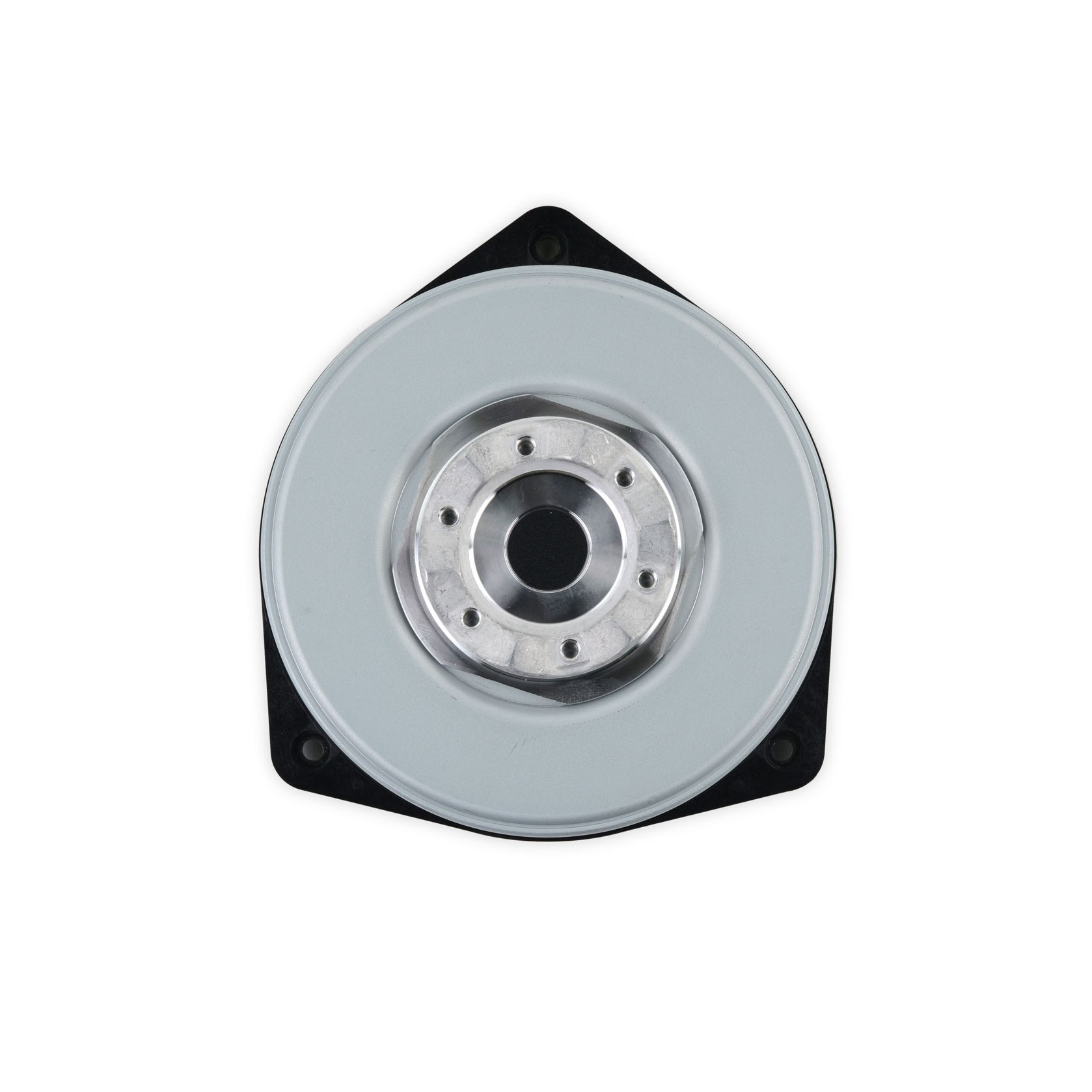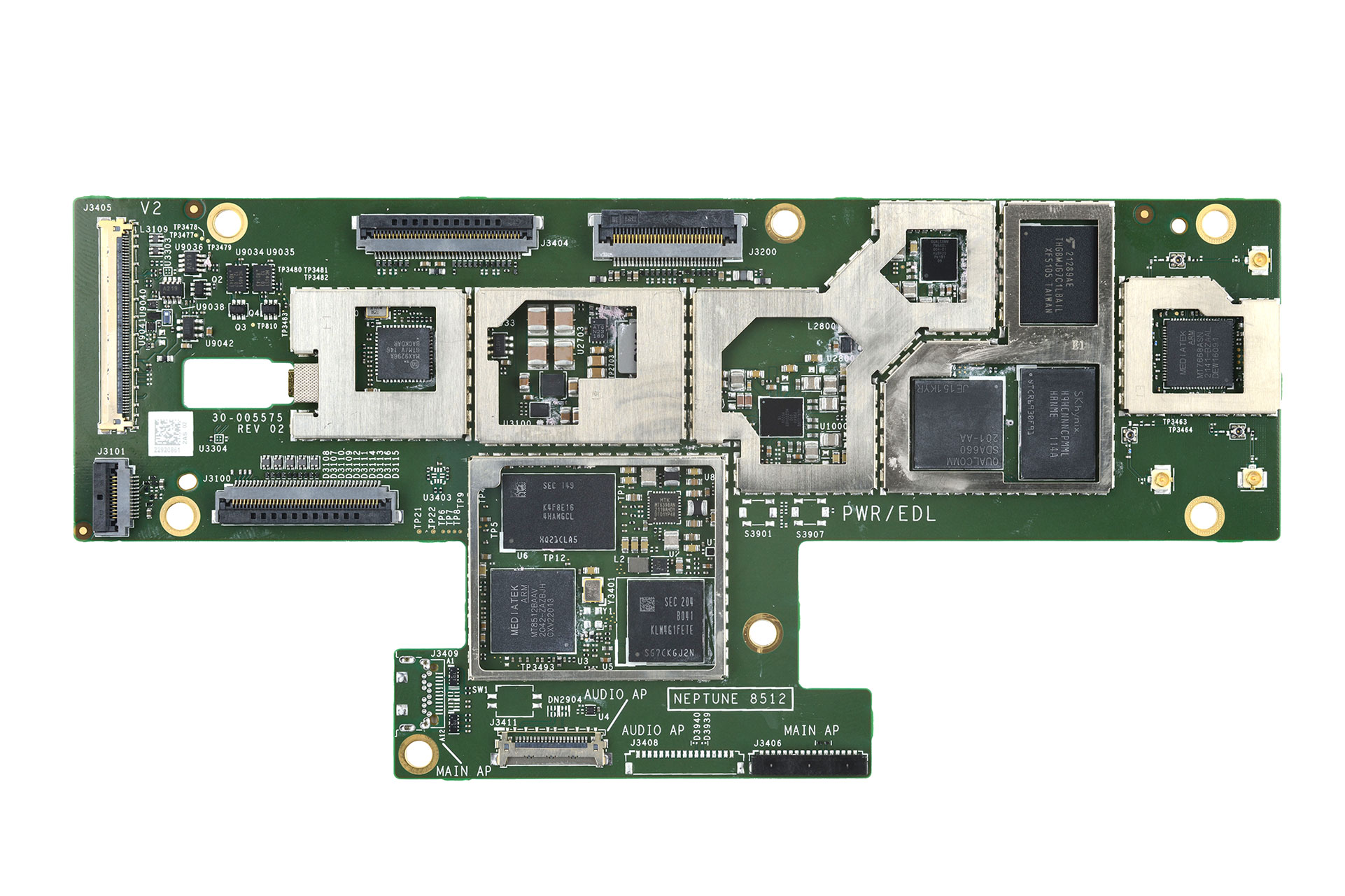On the first day of Fixmas, we bring you what is possibly the weirdest teardown of the year: a repairable Amazon device. Meet Astro.
The Amazon Astro was born as a robo guard dog and has evolved into a droid of all trades—security, mobile DJ, and drink fetcher. While this Johnny-5 wannabe is still in beta pre-release, software-wise he’s a bit of a dud. Laggy and not super intuitive, we found ourselves boggling at the thousand dollar price tag. That is, until we got under the hood.

Folks, the Astro is a trojan horse of repairability and maintenance that some dedicated engineering team managed to sneak into the infamous e-waste mecca that is Amazon.
From the outside you may assume that this is the same seamless, glue-filled gadget typical of disposable tech, but getting in is almost easy. So easy in fact we actually overlooked the intended entry to the battery compartment the first time around. Looking to get inside, we followed screws, and clips, and yes, a bit of adhesive to remove panels, and it turns out the highest-value target was hidden under the cupholders this whole time. Slide out the caddy liner and there’s iconography helping you to remove screws to access the power pack.


Of course, accessing the battery is only half the battle, Amazon has a famously closed parts ecosystem—our parts are actually harvested from recyclers. But the fact that someone on the Astro team decided that you should know exactly where to find, and how to replace, a battery is stunning. Not to beat a dead lithium-ion cell, but batteries are consumables, they eventually wear out, no matter how little they are used, it’s just chemistry. So having access to batteries means having the ability to keep your tech alive longer.
With this newfound vision of repairability dancing in our heads, we noticed some additional instructions. The main wheels tell you how to remove the covers, giving you easy access to cleaning out the hair and string that will inevitably tangle in home-bound rollers. Oh, and the taildragger wheel is easy to remove, too, by the way.
I’ll admit I came into this with a healthy dose of cynicism. I’m of the opinion that if Amazon wants someone to QA their robot, and wants to be able to map those people’s homes, they should be paying, not charging, the big bucks. And while that’s still largely true, the thousand dollars you’re paying for this hardware is probably not putting much of a dent in the production cost here. This thing is pricey. It’s hard to square the firing-the-Alexa-team with the beauty, quality, and precision of this relatively unknown guard bot. But we’re certainly glad there are engineers out there putting some serious design-for-repair thought into tech these days.


The incredible brushless motors are smooth and modular. The ultra-tall periscope is a feat of its own, using a wild tape-measure like extension mechanism that’s giving serious lightsaber vibes. And that’s not even mentioning the autonomous car levels of sensor hardware in here, IR, time of flight, you name it, Astro’s got it.
Is Astro a useful product, should it be in every home? Well, given Amazon’s relationship with privacy, probably not. But as a piece of engineering, is it worth praise? Absolutely. Looking back on this year, there’s a lot to be grateful for, and this Fixmas miracle is one more thing to add to the list. Amazon engineers—and really anyone designing consumer tech—if you’re listening, thank you. We see your efforts to design lasting products, against all odds, thanks to you we’re building a more repairable 2023.
Hoping for a bit more silicon to chew on? We’ve got some chip-filled goodness for you to admire:








Één opmerking
Im curious as to where I’d be able to source one of those batteries? Any help would be appreciated! I have two astros and would like to keep them forever!
Chris Michael - Antwoord